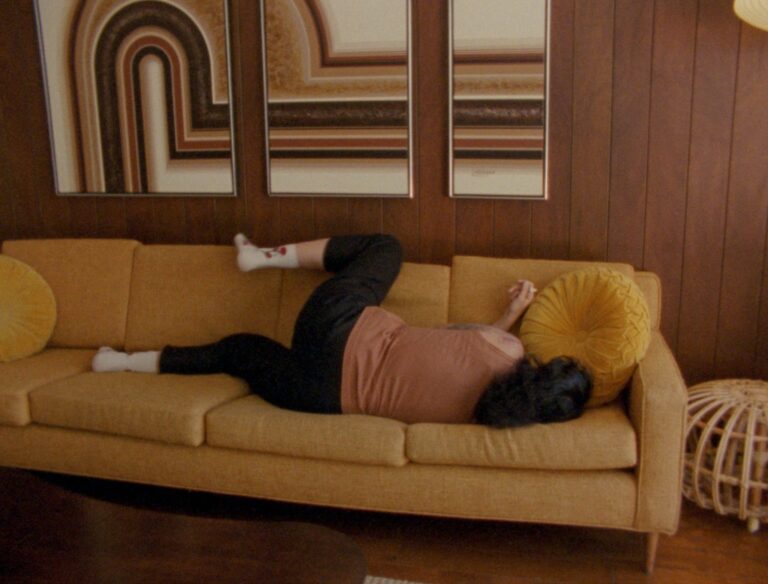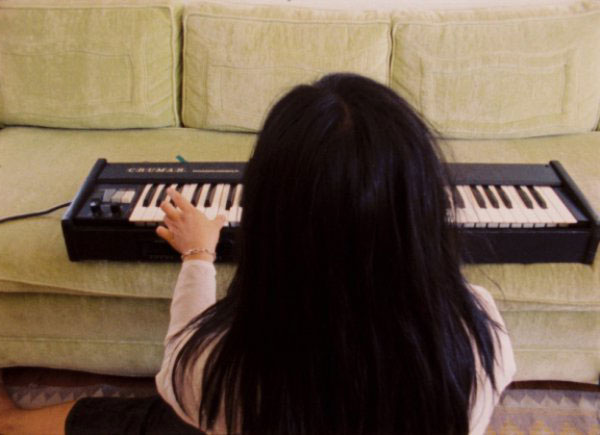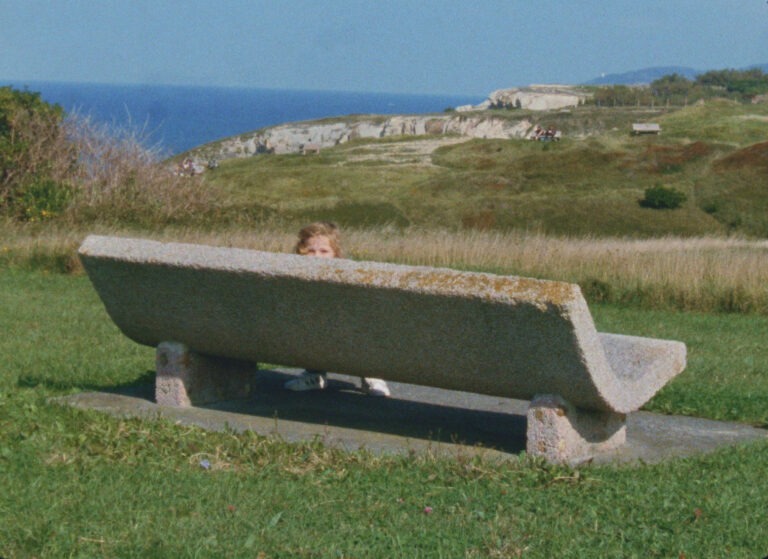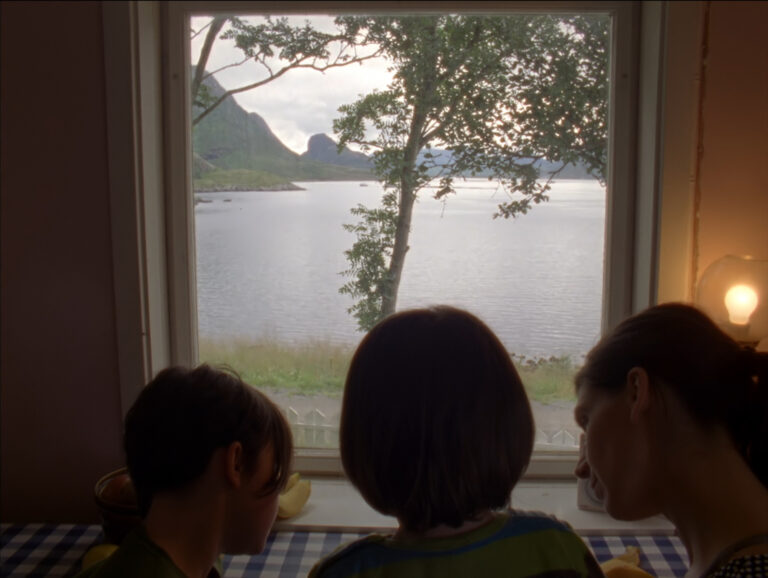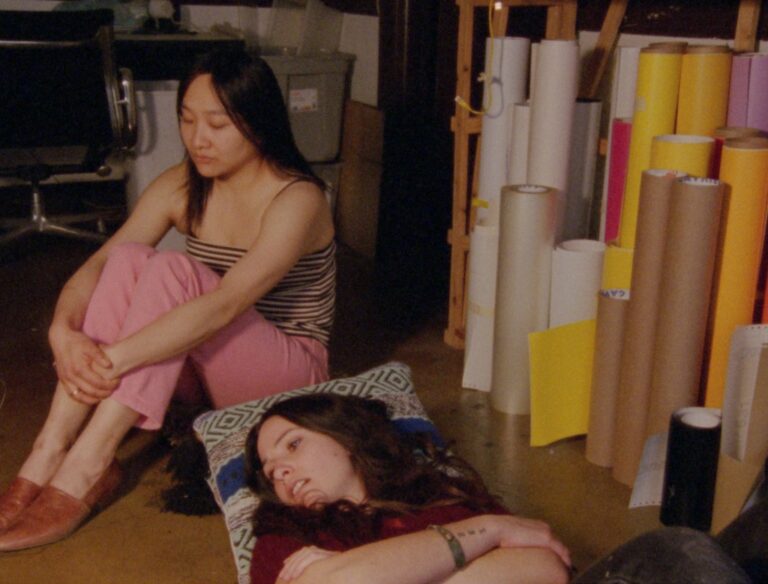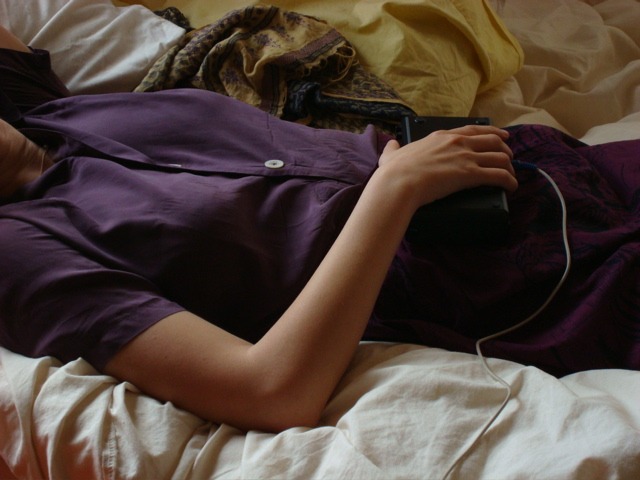We are delighted that Laida Lertxundi will take part in a conversation about her work following this screening.
In this programme of films curated by Helena Gouveia Monteiro, we will traverse the unique film landscapes of Laida Lertxundi, guided by songs and textual fragments that simultaneously provide and resist meaning. From Californian deserts to city scapes and icy Norwegian waters, a syntax of affect and empathy emerges and delivers its rigorous beauty through collective gesture, observation, and movement. Intimacy and a personal feminist praxis radically challenge the preconceptions around first person female accounts within the male-dominated lineage of formalist experimental film. Much like Laida’s first encounter with American avant-garde cinema, via Hollis Frampton’s unsettlingly cosmic Lemon (1969), itself a somewhat obscure reference to James Joyce’s Ulysses, the desire for diegetic meaning is both rewarded with audio-visual sensory pleasure and countered by a sour and lingering conceptual mystery.
Film information
Laida Lertxundi, A Lax Riddle Unit, 2011, US, 6 mins
Laida Lertxundi and Ren Ebel, In a Nearby Field, 2023, Spain, 16 mins
Laida Lertxundi, Utskor: Either/Or, 2013, Norway 8 mins
Laida Lertxundi, The Room Called Heaven, US, 2012, 11 mins
Laida Lertxundi, Autoficción, 2020, US/Spain/New Zealand, 14 mins
Laida Lertxundi, Words, Planets, 2018, US, 11 mins
Laida Lertxundi, My Tears Are Dry, US, 2009, 4 mins
Running time: 70 minutes
Laida Lertxundi, A Lax Riddle Unit, 2011, USA, 6 min, 16mm
In a Los Angeles interior, moving walls for loss. Practising a song to a loved one. A film of the feminine structuring body.
Laida Lertxundi and Ren Ebel, In a Nearby Field, 2023, Basque Country/Spain, 16min, 35mm, color, sound (screening from digital file)
A man, a woman and their young daughter live together in an apartment in the Basque Country. Domestic chores and everyday gestures are superimposed onto lush, green landscapes. The filmmakers and their stand-ins reinterpret fragments of a diary. Music fills the house while children’s drawings come to life. Combining quiet observation and moments of fantasy, In a Nearby Field is a film about support, heredity and the invisible little labors which sustain us.
Laida Lertxundi, Utskor: Either/Or, 2013, Norway/USA/Spain, 7.5 min, 16mm, digital HD
In the town of Utskor in the region of Bø, northern Norway, we find memories of a political past intertwining with domestic, familial moments during the midnight sun.
Laida Lertxundi, The Room Called Heaven, USA, 2012, 11 min, 16mm
American plains and high altitudes assembled in a B-roll structure take us to “a place of sounds” (Vision: Sound on Screen, Michel Chion). Plans américains show color and temperature shifts while an emotional room tone is sustained for the length of a 400ft camera roll.
Laida Lertxundi, Autoficción, 2020, USA/Spain/New Zealand, 14min, 35mm, color, sound (screening from digital file)
Borrowing its title from a literary genre, the film acknowledges the indeterminacy of both fiction and the self. Noir elements are reduced to deadpan gestures under bright California sunlight. Field recordings made in New Zealand are heard as women speak with each other about motherhood, abortion, breakups and anxiety. A civil rights parade moves slowly down a street. Bodies appear in states of weariness, injured or at rest, while songs by Irma Thomas and Goldberg evoke the passing of time and an uncertain future.
Laida Lertxundi, Words, Planets, 2018, USA, 11 min, 16mm, color, sound
This film applies the six principles for composition delineated in ‘Opinions on Painting by the Monk of the Green Pumpkin’, written by the eighteenth-century Chinese painter Shih-T’ao as referenced in Raúl Ruíz’s essay ‘For a Shamanic Cinema’ (for example, ‘draw attention to a scene emerging from a static background’ or ‘add scattered dynamism to immobility’). The film is composed of scenes with non-actors, and texts by R.D.Laing and Lucy Lippard.
Laida Lertxundi, My Tears Are Dry, USA, 2009, 4 min, 16mm
A film in the three parts of a dialectic. Hoagy Land’s song is played and interrupted as guitar makes sound, two women, a bed, an armchair, and the beautiful outside. After Bruce Baillie’s All My Life (1966). The lyrics of the song reference the eternal sunshine of California and its promises.
This event is screening as part of aemi’s DISSOLUTIONS Festival at The Complex Dublin. Tickets are available for individual days Friday or Saturday (15 euro per day) or for the full weekend (25 euro).
DISSOLUTIONS is proudly supported by Screen Ireland and The Arts Council.

Laida Lertxundi is an artist who works with film. Entangling the sublime and the critical her 16mm films capture collective, improvised gestures and diegetic sound events within a variety of natural landscapes to produce a deeply embodied, sensual formalism. Lertxundi’s work is invested in landscape as both an artistic tradition and a particular set of regional characteristics, idioms and inhabitants — from the deserts of California to the dramatic mountains of her native Basque Country. She is currently living in Paris and is a professor at École Nationale Supérieure des Beaux-Arts de Lyon. She is represented by LUX in London and her work is part of the collection of the Museum of Modern Art, in New York.
Her work has been exhibited at the Highline Art, New York (2023), Artspace Aotearoa (2023), Whitney Biennial New York (2012), Hammer Museum Los Angeles (2026), LIAF Biennial (2013), Biennale de Lyon (2013), Frieze Projects New York (2014) and in museums and galleries such as MoMA in New York (2022, 2017), Tate Modern, London (2016), Whitechapel Gallery, London, Angela Mewes, Berlin (2020), Joan, Los Angeles, Cibrían, San Sebastián (2021), ARKO Art Center, Seoul (2022), McEvoy Arts Foundation, San Francisco (2021), Human Resources Los Angeles (2019), MAK Schindler House (2013), ICA, London (2013), Museo de Arte Moderno de Medellín, Colombia (2015), CCCB (2017, 2013, 2021, 20122), PS1 MoMA (2013), Museum of Contemporary Photography Chicago (2013), Baltimore Museum of Art (2013), Kunstverein Hamburg (2014) and the Havana Biennial (2015) among others.
She has had solo exhibitions at Cibrián (2024), Artium, Vitoria-Gasteiz (2023), La Taller, Bilbao (2022), NoguerasBlanchard (2021), Matadero Madrid (2019), LUX London (2018), Tramway Glasgow (2018), FuturDome Milano (2019), fluent Santander (2017), Tabakalera San Sebastián (2017), DA2 Salamanca (2015), Azkuna Zentroa Bilbao, (2014), Vdrome London (2014) and Marta Cervera, (2013). Her films have been screened at numerous festivals such as Locarno, New York Film Festival, International Film Festival Rotterdam, London Film Festival, BFI, TIFF Toronto, Gijón, San Sebastián or Edinburgh among others.

Helena Gouveia Monteiro is a visual artist and experimental filmmaker from Portugal living in Dublin.
Concerned with the history of technical images and influenced by experimental cinema and media archaeology, she creates films, books, and multi-media installations that engage different levels of visual and cultural recognition to question our perception of language and audio-visual experiences.
Her work has been shown internationally in both gallery and cinema spaces, including International Film Festival Rotterdam, Ann Arbor Film Festival, Internationale Kurzfilmtage Oberhausen, Indie Lisboa, Curtas Vila do Conde, and Festival Ecrã. “Purkyně’s Dusk” (2021) is distributed by Light Cone Paris and “Man of Aral” (2023) was supported by the film project award from the Arts Council of Ireland.
She is the co-founder of Stereo Editions, an independent publishing collective of artists’ editions, a member of L’Abominable/Navire Argo, and currently co-directs the LUX Critical Forum Dublin.
